Ericameria laricifolia, Turpentine Bush
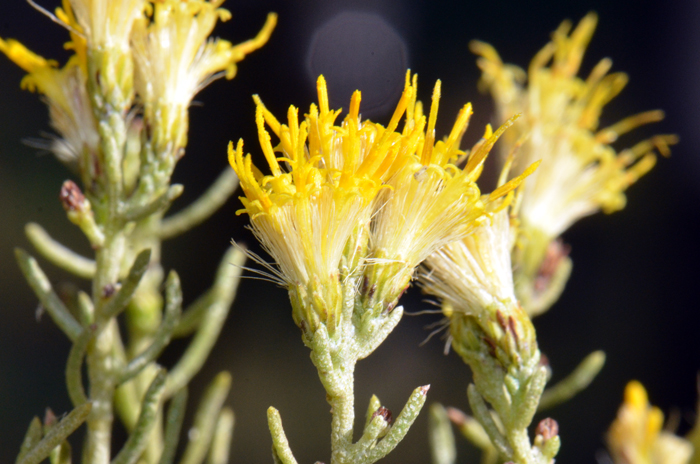
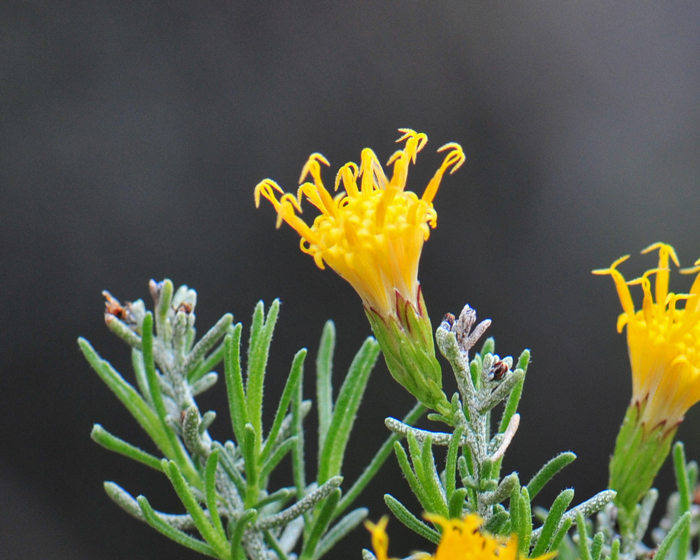
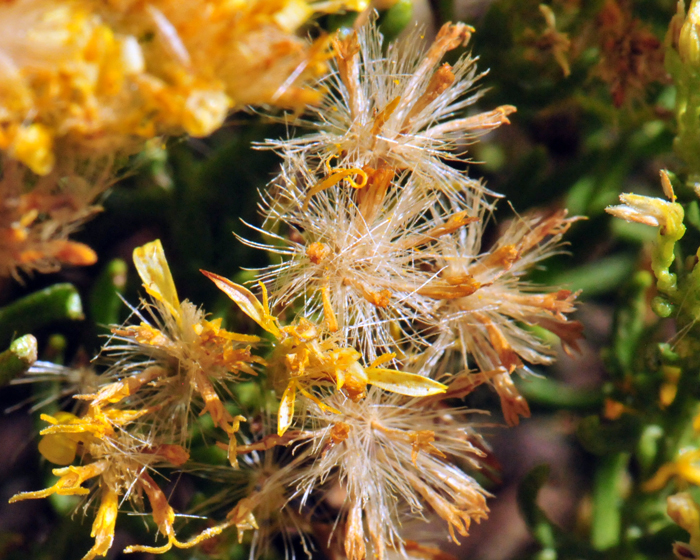
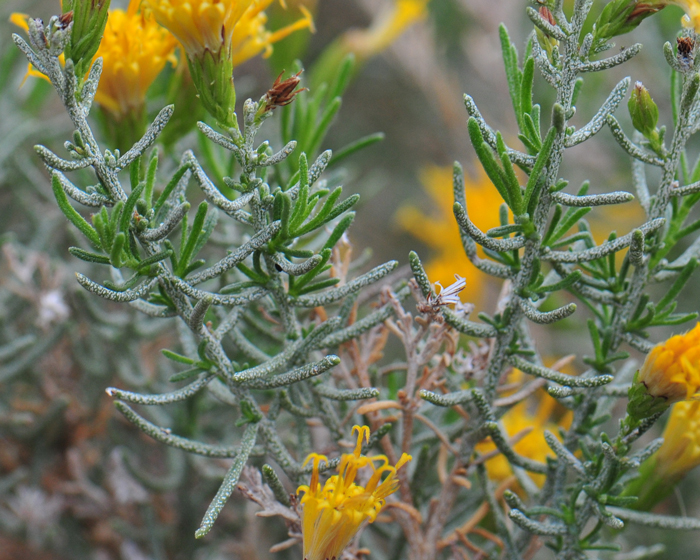
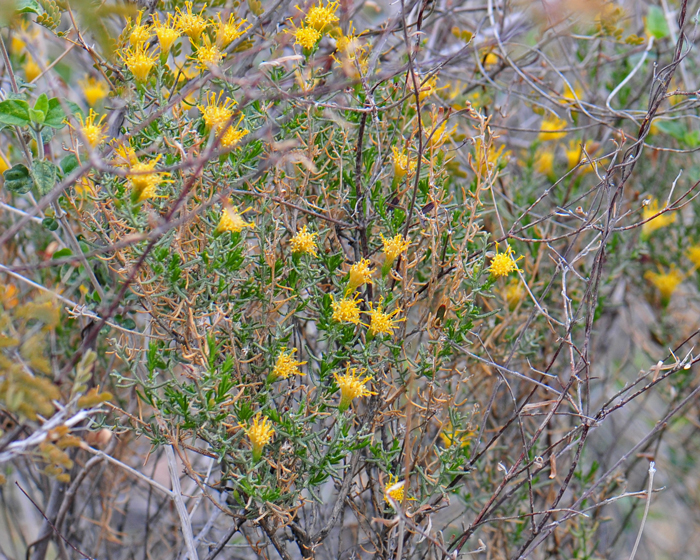
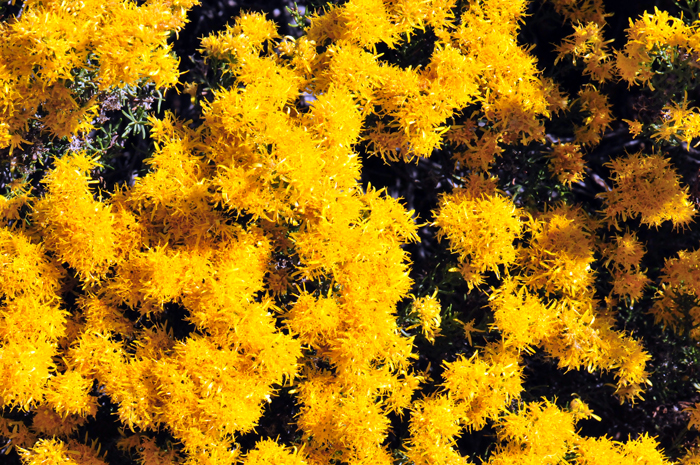
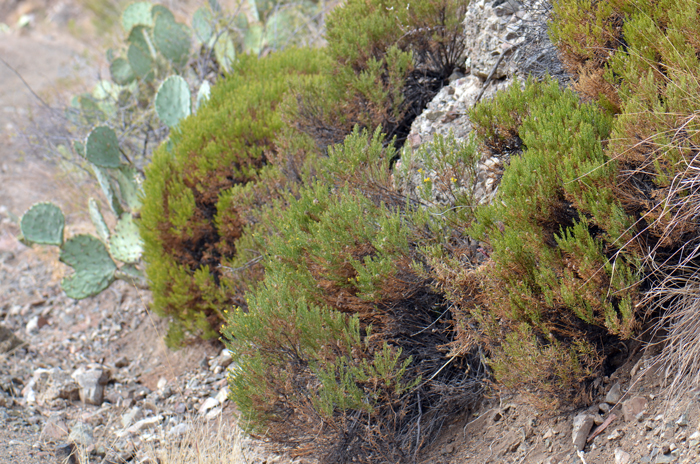
Scientific Name: Ericameria laricifolia
Common Name: Turpentine Bush
Also Called: Ericameria, Turpentine Brush, Turpentinebush; Spanish; Hierba De Conejo
Family: Asteraceae, Sunflower Family
Synonyms: (Aplopappus laricifolius, Aster laricifolius, Aster laricifolia, Bigelowia nelsonii, Chrysocoma laricifolia, Chrysoma laricifolia, Ericameria nelsonii, Haplopappus laricifolius)
Status: Native
Duration: Perennial
Size: 1 to 3 feet (30-91 cm) tall or more (6 feet - 180 cm)
Growth Form: Shrub, subshrub; plants woody, compact, somewhat rounded although shrubby, inconspicuous when not in bloom, profuse with small yellow flower heads; stems erect or ascending, mostly hairless and aromatic (smells like turpentine); plants gland-dotted and sticky (resinous).
Leaves: Small dark green, leaves crowded, blades needle-like (filiform) to narrowly lanceolate; leaves also gland-dotted and resinous; lower stems often without leaves; leaves aromatic, smell like turpentine.
Flower Color: Yellow, golden bright yellow; heads in irregular arrays or cyme-like clusters; floral heads with both ray (3 to 6) and disk (6 to 16) florets; bracts (phyllaries) surrounding heads linear to lanceolate; fruit is a cypsela with soft-hairy white to brown pappus.
Flowering Season: August or September to October or November
Elevation: 3,000 to 6,000 feet (914-1,829 m)
Habitat Preferences: More of an upland desert species preferring desert scrub and woodlands, sunny open areas, pinyon-juniper and chaparral communities, rocky slopes, canyons, rock walls, mesa slopes and dry desert washes.
Recorded Range: Turpentine Bush is found in the Southwestern United States in AZ, CA, NM, NV, TX and UT. It is also native to Baja California and northern Mexico (Chihuahua and Coahuila). In Arizona Turpentine Bush occurs in the central, southern and western parts of the state.
North America & US County Distribution Map for Ericameria laricifolia.
North America species range map for Turpentine Bush, Ericameria laricifolia:
North American range map courtesy of Virginia Tech, Dept. of Forest Resources & Environmental Conservation
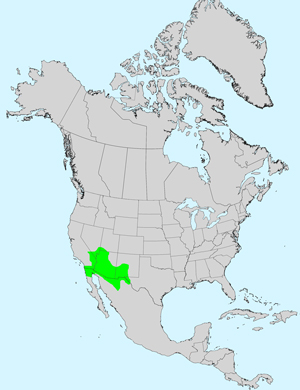
U.S. Weed Information: Unknown
Invasive/Noxious Weed Information: Unknown
Wetland Indicator: Unknown
Threatened/Endangered Information: Unknown
As a whole, the members of the genus Ericameria are generally referred to as Goldenbush, Turpentine Bush, Rabbitbrush and Rabbitbush and Rabbitbrush. They were all formerly described as Aplopappus, Haplopappus or Chrysothamnus.
The genus Ericameria was published in 1840 by Thomas Nuttall.
In the Southwestern United States: Arizona has 9 species of Ericameria, California has 22 species, Nevada has 15 species, New Mexico has 4 species, Texas has 2 species, Utah has 13 species. Hybrids exist. All data is approximate and subject to taxonomic changes.
Comments: One of the more common plants found in Arizona above 3,000 feet (914 m) that blooms showy bright yellow flowers in late summer and early fall. It grows well in arid environments and dry alkaline soil and is often used in desert landscapes to achieve a more natural look. Birds and insects readily feed on Turpentine Bush and other species of Ericameria.
In Southwest Desert Flora also see Narrowleaf Goldenbush, Ericameria linearifolia and Rubber Rabbitbush, Ericameria nauseosa.
The genus Ericameria was published in 1840 by Thomas Nuttall.
The species epithet laricifolia (laricifo'lia:) with leaves that look like the Larch tree.

